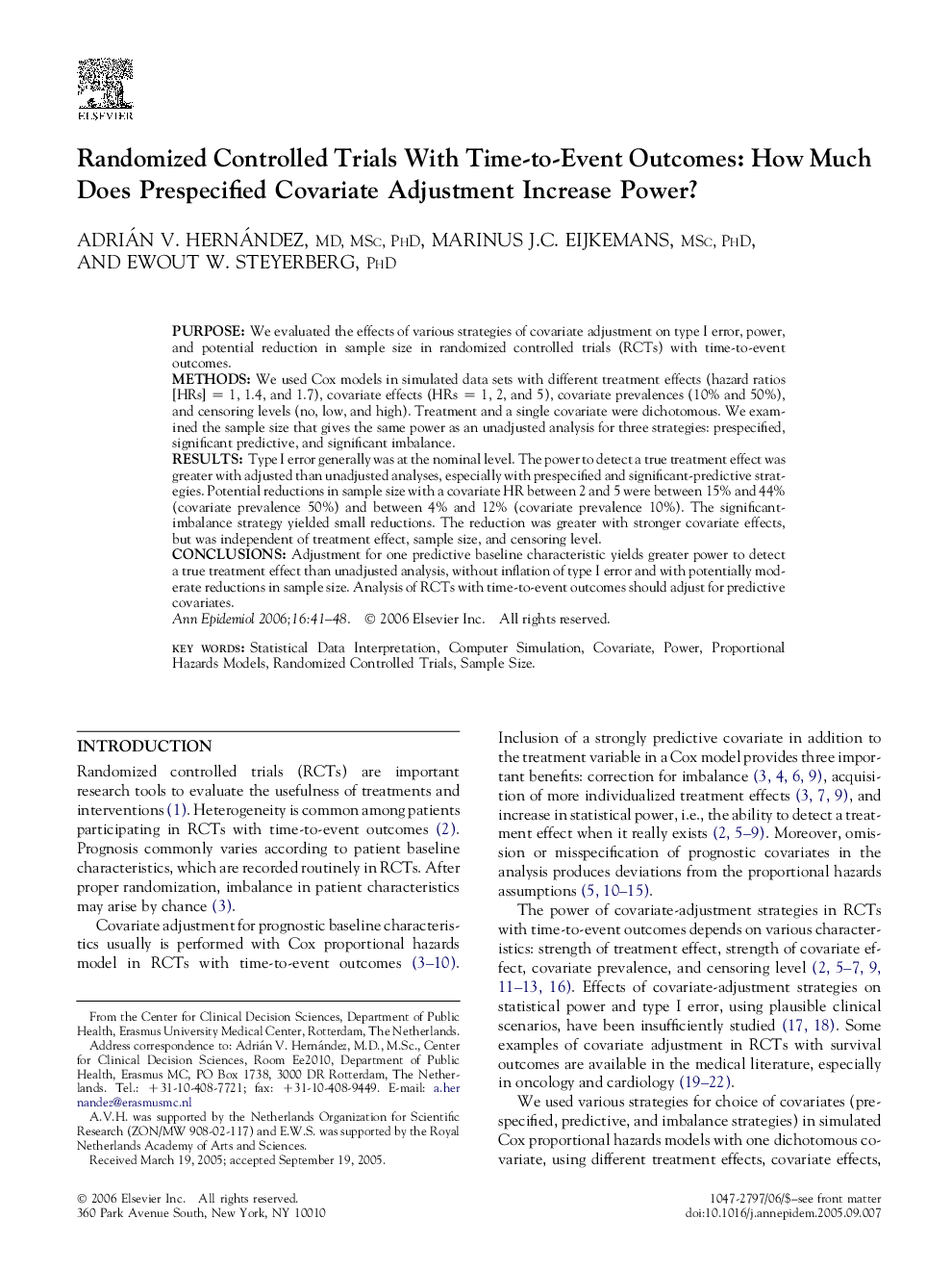| Article ID | Journal | Published Year | Pages | File Type |
|---|---|---|---|---|
| 3445930 | Annals of Epidemiology | 2006 | 8 Pages |
PurposeWe evaluated the effects of various strategies of covariate adjustment on type I error, power, and potential reduction in sample size in randomized controlled trials (RCTs) with time-to-event outcomes.MethodsWe used Cox models in simulated data sets with different treatment effects (hazard ratios [HRs] = 1, 1.4, and 1.7), covariate effects (HRs = 1, 2, and 5), covariate prevalences (10% and 50%), and censoring levels (no, low, and high). Treatment and a single covariate were dichotomous. We examined the sample size that gives the same power as an unadjusted analysis for three strategies: prespecified, significant predictive, and significant imbalance.ResultsType I error generally was at the nominal level. The power to detect a true treatment effect was greater with adjusted than unadjusted analyses, especially with prespecified and significant-predictive strategies. Potential reductions in sample size with a covariate HR between 2 and 5 were between 15% and 44% (covariate prevalence 50%) and between 4% and 12% (covariate prevalence 10%). The significant-imbalance strategy yielded small reductions. The reduction was greater with stronger covariate effects, but was independent of treatment effect, sample size, and censoring level.ConclusionsAdjustment for one predictive baseline characteristic yields greater power to detect a true treatment effect than unadjusted analysis, without inflation of type I error and with potentially moderate reductions in sample size. Analysis of RCTs with time-to-event outcomes should adjust for predictive covariates.
